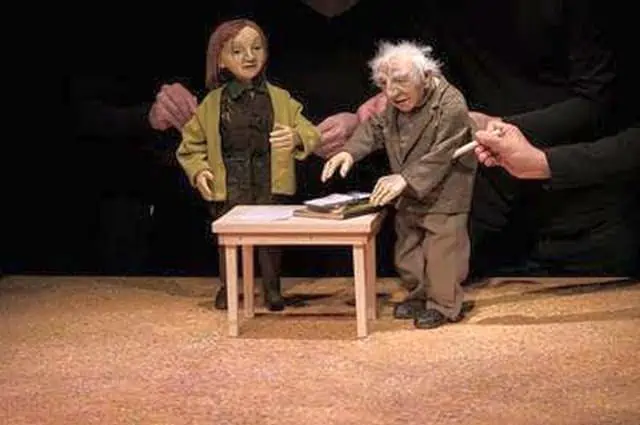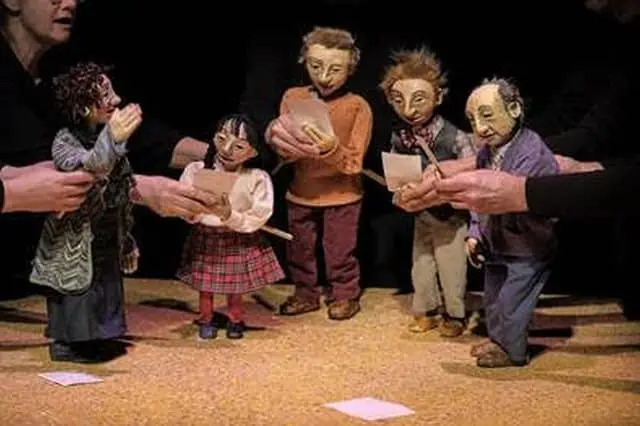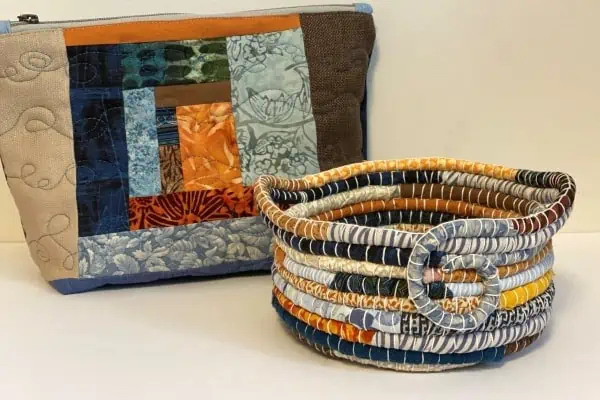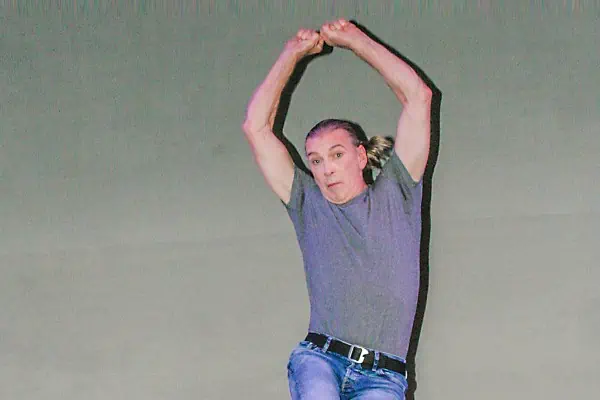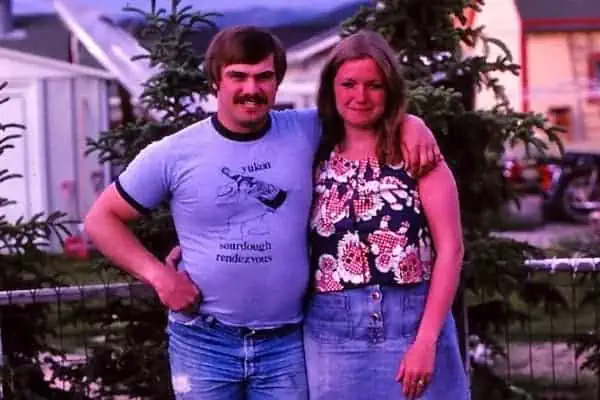Cathy Stubington doesn’t mind being in the shadows when she does a show. In fact, she prefers it.
“My main interest has always come more from the making side, and the conceptual side, but I’m a puppeteer, as well. As a performer, I prefer to be invisible, which is why I’m not an actor.”
Stubington began making and manipulating puppets as a teenager in Montréal in the 1980s, as part of a group of young people in “a kind of music organization” who soon began taking their brand of theatre to schools and community centres.
“I started out doing string marionettes, but I’ve really explored many different kinds of puppetry. It’s basically something I’ve done almost as long as I can remember,” she said.
After relocating to British Columbia, Stubington founded her own performing company, called Runaway Moon, which was incorporated in 2000 in the Enderby-Grindrod farming area of the North Okanagan district. One of the company’s two artistic streams is executing large-scale community projects that might involve as many as 150 participants, most of whom have little or no previous theatre experience.
For those events, Stubington has created giant puppets, including one that required three canoes to float it down the Shuswap River.
The second part of Runaway Moon’s mandate is more intimate puppet theatre, such as the environmentally-themed show it will bring to Whitehorse in mid-November, called 21 Ways to Make the World Last Longer. Although the piece has a large “cast” by contemporary theatre standards, the number of human performers is much smaller – and much less visible.
“The puppets are about 20 to 22 inches tall, and they exist on a table top, which is their world. There are about 27 puppets, but a group of five puppeteers manipulates them kind of collaboratively,” Stubington explained.
“Sometimes there’s one person on a puppet. Other times, somebody else will be helping with the hands. Sometimes a puppet will be passed from one manipulator to another.”
In this Japanese-influenced style, the puppeteers – who use small rods to manipulate the characters – are visible, but not dominant.
“We’re not hiding ourselves. We’re dressing in black, which is kind of a convention, so we’ll go into the shadows, but we’re there with the puppets,” she said.
“The puppeteers are very attentive, and kind of caring, and I think that helps in bringing the puppets to life. It kind of draws out the imagination of the audience in a really special way.”
The show, which Stubington conceived and co-wrote with director and fellow puppeteer James Fagan Tait, does not follow a conventional story arc. Instead, it is a series of vignettes involving a group of “ordinary, and slightly oddball” people.
“One of them is talking about putting posters up all over town that have pictures of birds on them. One of them is talking about how he’s teaching his elderly mother how to take the bus.”
Another concerns an elderly man who is “experimenting with listening to all the sounds you can hear when you listen to silence.” Tying the various vignettes together is a chickadee “who is kind of like the canary in the coal mine,” Stubington said.
“The play itself is about humans trying to find a way of being in the world with some of the warnings that we’re having, and actually trying to listen to a warning that’s coming from our bird neighbours.”
Although 21 Ways to Make the World Last Longer is a puppet show, Stubington is quick to explain that it is not children’s theatre, as such.
“It’s kind of geared towards sort of a thoughtful adult audience. But it’s not adult theatre in a way that you wouldn’t want to bring your children,” she said.
“We find that people of all ages enjoy it at different levels, and it’s actually a really wonderful thing for adults to do with younger people, because it brings up a lot of things to talk about and think about afterwards.”
Stubington acknowledges that it’s easy for people to get frightened away by warnings about what’s happening to the environment.
“This play isn’t doing that at all. It’s just looking at really simple things that people are doing in everyday life that we think that can be making the world a more livable place. It’s actually quite affirming.”
In addition to being one of the five puppet manipulators, Stubington created and painted all the character faces, and made their costumes. One of the two people who helped make the bodies was fellow puppeteer Zompopo Flores, with whom she has worked since her Montréal days. Others in the Runaway Moon cast include Tait, Sarah May Redmond and Tom Jones.
There will be three performances of 21 Ways to Make the World Last Longer, Wednesday to Friday, November 15, 16 and 17 at the Old Fire Hall.
Curtain time is 7:30 p.m. For more information go to YukonArtsCentre.com.

